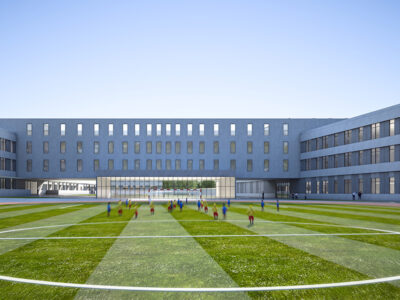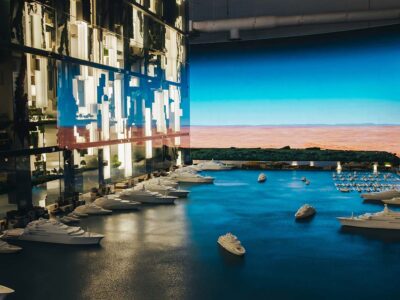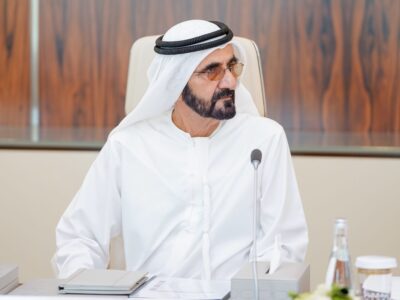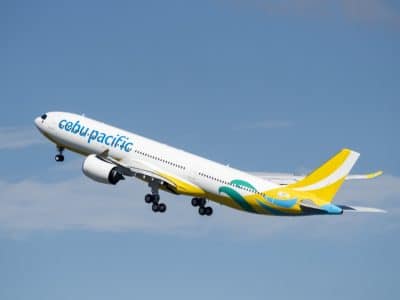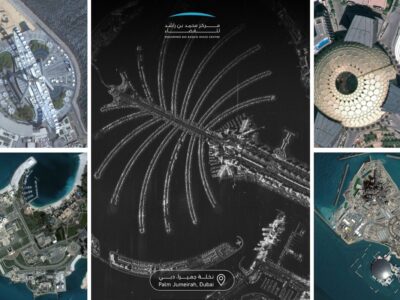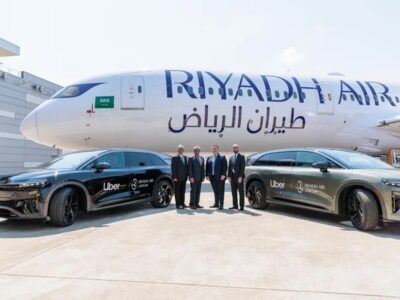From fun flooring to LED lighting and forest-friendly furnishings, a host of sustainable products are making their way on to the market, Selina Denman discovers.Manufacturers are clued up to the fact that sustainability may never be the number one criterion for designers during the product selection process. But it has already made its way on to the top four or five issues to consider, maintained Lindsey Parnell, president and CEO, Europe, Middle East, India and Africa, for Interface Flor.
“We do not expect designers to buy our carpets just because of sustainability qualifications,” he said. “For me, a designer’s first and foremost responsibility is the aesthetic requirement, and that has to be satisfied. That’s why we have the broadest range of designs in the industry,” he noted.
“Sustainable products can’t be of inferior quality, and we don’t expect people to pay a premium for them. People expect quality, they want the right price and they demand variety. But when all those boxes are ticked, we are actually finding that sustainability is becoming a deal clincher. And that’s probably as good as its going to get – but it’s good enough.”
Furthermore, whilst designers are increasingly prone to promoting sustainable solutions, it is still at the discretion of the client as to whether those solutions are actually implemented – which means that long-term, sustainable solutions are often overshadowed by short-term cost considerations.
“While designers are able to provide recommendations and expertise as guidance, it is the decision of the end client which ultimately drives product selection,” maintained Rebecca McIlwraith, director of Our Divan, a recently-established supplier of New Zealand products to the local market.
“We still have the odd client who really couldn’t care at all,” admitted Ben Corrigan, senior design manager at interior design firm, Bluehaus. “But I do think we are going in the right direction in this market.
The directives that they have put in place are absolutely the right thing to do. However, what we are finding is that we are starting projects with good intent but when it becomes cost prohibitive, we are having to revise some of the designs,” he added.
Siddharth Patel, partner at Oceanic Trading, agreed that a willingness on behalf of specifiers, designers and architects is often not enough to guarantee a sustainable end product.
“There are some diligent, sustainable-minded specifiers and architects out there, because they have come from countries where this is already part of their industry so this is second nature to them. They are requesting and they are quite happy to specify but they are not the decision makers on the price side – and there is a price difference,” he said. Next generation LEED
But with LEED 2009, the long-awaited update to the internationally-recognised green certification programme, having passed member ballot last month, the green building movement looks set to enter a new stage in its evolution. The new and improved LEED rating will include a number of technical improvements focused on enhancing energy efficiency, reducing carbon emissions and addressing other environmental and human health outcomes. LEED 2009 will also incorporate regional credits, extra points that have been identified as a priority within a project’s given environmental zone.
This may serve to further ingratiate the system with the UAE’s design and supplier community, which has sometimes argued that LEED is not entirely relevant to this region.
“With any new system there are always issues and pitfalls, especially with those that are adopted from another country without considering the idiosyncrasies of the local environment,” explained McIlwraith.
“As a rating system, LEED is effective in the sense that it is the first national rating introduced by an organisation to the UAE to provide guidelines and measures for green buildings, and for a sustainable future. As such, it should be seen as the leader and authority on the subject,” she added.
“Any rating system is good, as it allows developers to set a benchmark for themselves,” Oceanic Trading’s Patel agreed. “A rating system should definitely be employed.
When it comes to choosing which one, any number of ones that already exist will do, but they should be adapted for the local climate. I don’t feel that any particular one is ideally suited for how people live here and how the climate is here. And that’s exactly what Estidama in Abu Dhabi is trying to do.”
The problem, McIlwraith continued, is that designers do not always have a holistic understanding of what LEED really means – and often see it as the last word in sustainability rating.
“From a supplier perspective, issues arise when the designer doesn’t completely understand what LEED is. Based on their knowledge, we are getting requests for only LEED-certified products, which automatically excludes our products since they are predominately from New Zealand or Australian companies.
“We are working on ways to overcome this. As a first step we are working towards attaining recognition at the appropriate levels of accreditation and regulatory bodies from other countries, which will open the market to more competition and wider product selection,” she maintained.
A number of the products supplied by Our Divan are sustainable, particularly since wool is a common feature and offers a whole host of ‘green’ characteristics.
Loop, a high performance textile collection designed by Mokum, includes a wool solid called Sateen, which is a sustainable fabric made in accordance with EU Ecolable regulations. In addition to offering an extremely soft finish, it is biodegradable and features wool fibre and fabric processed in an environmentally friendly way.
Our Divan also supplies Maxwell Rodgers Fabrics, which offers the Eco-Wool product range, certified by Environmental Choice. The range is fully recyclable, uses wool from organic farms and boasts an eco-accredited supply chain and energy-efficient processes.
In addition, the company supplies products by Carpets and Rugs of New Zealand (CRONZ) and furniture from David Trubridge, a specialist in green designs.
Also intent on greening the furniture industry is Spain’s Andreu World, which works with raw wood that comes from forests registered with FSC, an independent, non-governmental, not-for-profit organisation established to promote the responsible and ethical management of the world’s forests.
This eco-friendly approach is a trend being adopted by most furniture manufacturers at present, maintained Sara Mengesha, a decorator for The One. “I believe there is a genuine interest in looking after our planet; people are more caring about their environment nowadays, so they use organic materials and recycle more than ever before. I think this factor has had a major affect on current trends,” she commented.
The One’s autumn/winter collection has paid homage to organic, eco-friendly influences, particularly in the case of the Radiant Retreat line. “In Radiant Retreat, we used natural textiles, lots of wood and light colours. We have also introduced an organic cotton bedlinen range,” Mengesha revealed. Lighting the way
Sustainability concerns are playing a significant role in shaping the evolution of the lighting industry as well. Italian lighting manufacturer Andromeda is designing all of its new lines with LED lighting in mind, explained Gianluca Vecchi, the company’s president.
Its most recent creation, Brio, is a hand-made Murano glass lamp in that utilises LED technology. “We have employed 16 LEDs that consume three watts each, instead of three traditional lamps which consume 40 watts each. Therefore, we consume 48 watts instead of 120.
This process is less expensive for the client and also has a positive impact on the reduction of CO² in the atmosphere. The LED also lasts up to 100,000 hours – as opposed to the 10,000 of a traditional light. Therefore, we have also managed to reduce the costs of maintenance,” Vecchi explained.
The company’s sustainable approach is reflective of its location and its roots. “We are based on Murano island, in the centre of the Venetian lagoon, in an environment that is extremely fragile and that has been seriously affected by pollution and industrial activity.
“We operate within a very strict net of regulations to preserve the environment and instead of thinking about it as a limit and a cost, we agree that it is the only way to think of our future. In a bad place we wouldn’t be able to create beautiful things,” Vecchi said.
“We think that the lighting industry should see this challenge as a way to grow and develop. In spite of the economic recession, we are sure that investing in technology will enable the boom of a new generation of products that are environmental friendly.”
In recognition of the need to invest in new technologies, US-based Renaissance Lighting, a pioneer in solid-state LED architectural lighting, recently entered into a partnership with Dubai’s HCT Centre of Engineering Excellence, in order to boost green-technology knowledge transfer between itself and the college’s students and faculty members.
A conference marking the onset of this new relationship was held in November and saw a range of industry experts take to the stage. “This was an event that united academia, business, industry and of course the government, focusing on the same issues – the environment and energy conservation,” explained CEO, Renaissance Lighting. Barry Weinbaum.
The keynote address for the ‘Lighting the Way to a Green Dubai’ conference was delivered by Saeed Mohammed Al Tayer, CEO of the Dubai Electricity and Water Authority (DEWA). Other speakers included Habiba Al Marashi, chairperson of the Emirates Environmental Group; Dan Savage of Atkins; Ali bin Towaih, chairman of the Emirates Green Building Council, and executives from Renaissance Lighting and its local distribution partners, Victory Technologies International and Stellatek Solutions.
Recently launched in the region, Renaissance’s solid-state lighting fixtures offer a host of environmental benefits, predominantly associated with energy saving. They emit no harmful ultraviolet light, reduce CO² emissions at a rate of 1.6 pounds for every KWH saved, contain none of the mercury found in some fluorescent lamps, and reduce hazardous waste by being virtually maintenance free.
In concrete terms, they boast an 80% lower total cost of ownership, as compared to incandescent light sources, and eliminate virtually all maintenance costs as there are no lamps to replace over a lifespan of between 50,000 and 70,000 hours. And because of the lower comparable heat emission to incandescent lighting, using solid-state LED fixtures can result in savings of up to 65% on air-conditioning as well.
“The green movement is here to stay,” stressed bin Towaih during his address. “It is moving fast and it’s on solid ground. What we need now is the know-how; we need people to understand.”
Bin Towaih noted that the number of LEED accredited professionals in the UAE had jumped to 163 this year, while the total number of projects registered to receive LEED accreditation had reached 127 by the final quarter.
“This jump has shown the market’s reaction to His Highness’ resolution in Dubai. The number of new and existing buildings has positioned the UAE as number one outside of the US when it comes to LEED accredited buildings,” he maintained.
The government has been a major influencer and driver of change in the sustainability stakes, McIlwraith agreed, but industry self regulation and commercial entities are also playing their part. “This is channelled through organisations such the Emirates Green Building Council whose membership base consists of a cross section of like-minded industry participants who want to actively promote the issues.
“Commercial entities such as property developer Nakheel, which announced its new sustainability agenda at Cityscape 2008, are also independently making an effort to promote a sustainable approach to environmental and social management through corporate policies and practices,” she detailed.
“These market initiatives are creating a demand for sustainable products and services which hasn’t existed before. The supply industry is lagging behind the service sector somewhat, as it has been a lot slower to pick up on the trend. While this means there is currently a limited choice in the market for suitable products, it is bound to change as opportunity grows.” From the bottom up
Doing its part to correct this deficit, Interface Flor has introduced a new collection of carpet tiles to the market, which promotes glue-free installation techniques, enhanced cable management opportunities, recycled post-consumer nylon 6.6, full colour spectrum recycled yarn and original vintage design influences, along with the highest recycled content available in the industry. This is in keeping with the company’s mission plan to have zero impact on the environment as early as 2020.
“Our chairman, Ray Anderson, spends most of his life travelling the world talking about the environment and sustainability. He started us off on this mission to have zero impact on the environment by 2020,” said Parnell.
“To put it into context, he started this off in 1994. He read books and read the evidence of climate change and decided at that point that he, as the chairman and then CEO of a multi-national business dependent on petrochemicals, should do something different, should make a change, and should lead by example,” Parnell elaborated.
“That wasn’t very popular on Wall Street at the time. He was branded as a bit of a tree hugger. Investors said, ‘Where’s the return for the shareholders?’ Fortunately, he had the vision, the stamina and the determination to forge ahead – and now he is viewed as being a visionary.”
As a result, all of the company’s European factories have run on green electricity since 1998; every single member of staff receives sustainability training; all company processes are designed with minimum energy is mind; and virgin materials are reduced and replaced with recycled material at every economic opportunity. “And that word economic is used deliberately to not just mean financial economy but also greenhouse gas economy.”
According to Parnell, the carpet and flooring industry has emerged, perhaps surprisingly, as a market leader in sustainable practices. “I often get asked, ‘How come all you people in the carpet industry, which is quite a traditional sector, know so much about sustainability?’ The truth is other suppliers in far sexier industries, dealing with far sexier products, are quite ignorant about it.”
Oceanic Trading has also boosted the selection of sustainable flooring options available on the market with its new offering of bamboo products from The Bamboo Factory in Vietnam.
“As of last year, I have been guiding the company towards supplying more sustainable products, because we need to be sustainable and also the market seems to be requiring it,” the company’s Patel explained.
“We have taken on two distribution agreements for products – one is bamboo products, as in parquet flooring, outdoor decking and tiles or plywood made out of bamboo, sourced from Vietnam. We are also looking into stocking and supplying interior products that are used in custom joinery, such as MDF, hardwood and lumber.
Resilient, moisture and stain resistant, long-lasting and a viable alternative to hardwood flooring, Vietnamese bamboo is also attractive, and easy and cost-effective to install, the company maintains. In addition, the products account for multiple LEED credits.
Oceanic Trading has also signed up to the Green Building Council, which provides plenty of opportunity to meet like-minded people and to keep abreast of an industry that is moving at breakneck speed, Patel said.
It is moving very fast, but it is moving fast uncoordinated, which can cause a lot of discrepancies and confusion. I wouldn’t mind seeing it slip back into third gear – and all stakeholders being able to move in cohesion,” said Patel.
With manufacturers, clients and designers often approaching the issue from differing standpoints, it will still take some time before there is a consistent industry stance on sustainability.
“The one thing I would challenge designers with is industry specification standards that demand that products last for ten or even fifteen years. This means that most manufacturers have to build things to be bullet proof, especially in a heavy wear, commercial environment,” said Interface Flor’s Parnell.
“If you want something to last fifteen years – which I can understand if it is back office space – it has to be bullet proof and so it has to be nylon. But if you only really want it to last five years, then there may be alternatives that are not as heavy wearing as nylon but will do the job,” he continued.
“I think that’s systematic of society’s problem as a whole with sustainability. We live in such a disposable society that products are built and engineered to last far longer than is required of them and then all that embodied energy just ends up in the landfill. It needs to look good and do the job, but don’t design it to last three times longer than it is required to last,” he concluded.
